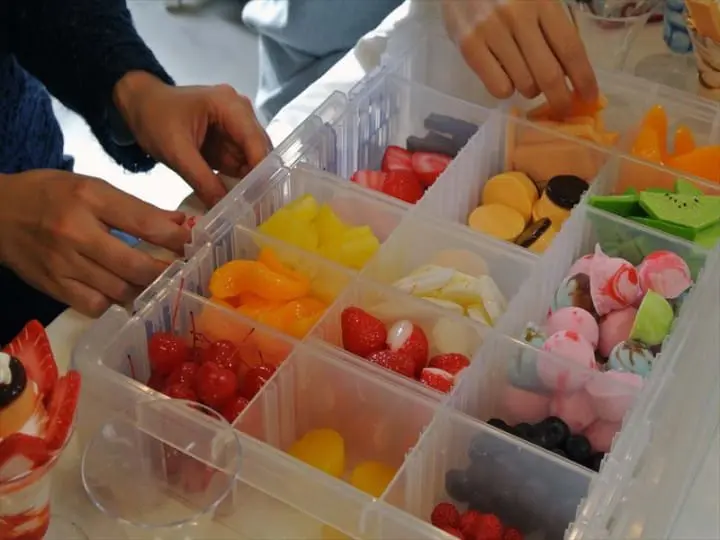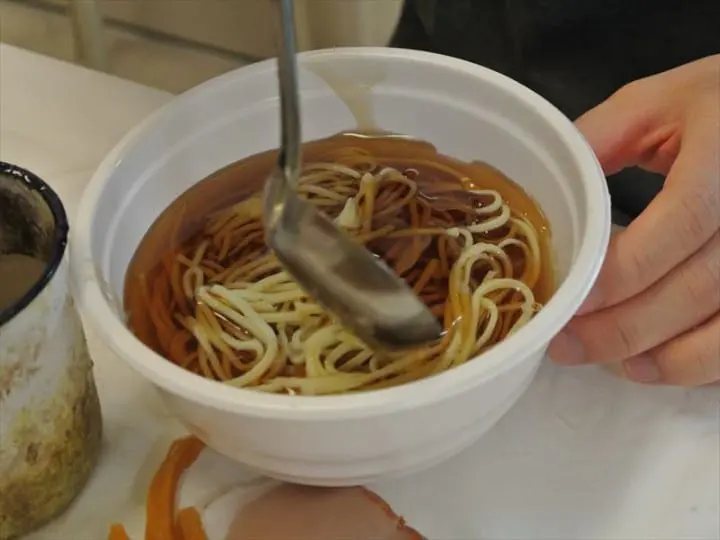Plastic Food Making Workshop - Learn The Japanese Art Of Food Samples!

Learn about the history and the techniques behind food sample, the art of plastic food making! We introduce here the history of this craft and a workshop where you can learn all about it.
Japan, and especially Tokyo, can often be overwhelming in the number of different experiences it offers, but if you’re looking for something a little more off the beaten path of the typical travel ternary, then trying a traditional plastic food workshop might be perfect for you! At the workshop, not only do you learn history and view demonstrations of how the final product is made, but you can even create your own plastic food sample to take home as a unique souvenir.
The History of Food Samples

The art of crafting plastic food (or "food samples") is a surprising field that Japan has honed to a perfection, and which no other country has come close to replicating. The final products are used by restaurants in order to attractively display their dishes to potential customers - that way, people roaming the streets looking for something to satiate themselves aren’t even required to stop and glance at a menu, but can simply scan store windows quickly. And, while not the original intent, it certainly helps hungry foreign tourists unable to decipher the complex world of Japanese writing too.
The craft is believed to have first begun in Gifu prefecture, at the beginning of the Showa era (1926 - 1989), as a method to help lessen the burden of a crowded restaurant by allowing customers to decide their order outside of the store. However, displaying real food wasn’t a good option, as it turns bad as the day progresses. Therefore, food samples were was developed as an attractive alternative to displaying food.
How Food Samples Are Made

Originally, these samples were made with wax; however, beneath strong sunlight, the wax would wilt with the heat, losing its shape and appeal.
Currently, a mixture of various materials is used depending on which food product is being made. Mainly, plastics are used as they can replicate the physical features of the food accurately while still remaining durable.
The craftsman then uses this material to form the molds in multiple different stages, attaching extra decorations and using various colors to create the most appetizing looking sample possible. These finished products are hugely popular and used by restaurants all over Japan. They are also exported to other Asian countries such as Taiwan or Thailand.
Recently, the samples have also been used as fashion accessories, such as for key chains or magnets, which can be perfect gifts for travelers looking for something out of the ordinary.
Impressions from a Food Sample Making Workshop

If you’re interested in learning more about the process of creating plastic food, and even taking home a finished product for yourself, there is a great variety of workshops that you can join. One such place is the Yamato workshop in Ikebukuro. At this studio, you can get a first-hand experience at crafting samples, picking up your food, and adding the finishing touches yourself.
Participants can choose from things like sushi candles, tart key chains, and even crafting a full sized dish!
Yamato Food Sample Workshop - Information

The Yamato workshop can be booked online and is accessible in English. In fact, the majority of their workshop clientele are foreigners from various countries, so the English level used during booking and workshop instructions is very proficient. There is no issue when communicating with any of the staff.
To make a reservation, simply go to their website and click on the link to the English page, or search for it on the booking website veltra.com. On this site, check the calendar to see the days that are available. From there, click on the reservation inquiry form and complete the required information. After the reservation is confirmed, an email will be sent to your email address. Large group visits are accepted as well as individual reservations.
On the day of the workshop, accessing the studio is simple: the space is located in Ikebukuro and is about a 5-minute walk from the Kita-Ikebukuro Station, which services the Tobu Tojo line. It is recommended to take another line to the much larger Ikebukuro Station and then transfer to the Tobu Tojo line there, in order to access the studio.
In Conclusion
While everyone might know some history about sumo or samurai or ukiyo-e, food samples are a lesser known aspect of Japanese culture that embodies both rich traditions and has been modified to fit a modern, kawaii (cute) image as well. And, rather than just learn about this uniquely Japanese craft, now you’re able to get a hands-on experience with a personally crafted memory to keep as well.
For those interested in a one-of-a-kind opportunity for experiencing Japanese culture, attending a food sample making workshop is a must!


































![[2026] Family Winter Trip to Suzuka Circuit! – For Both Day trips and Overnight Stays!](https://resources.matcha-jp.com/resize/720x2000/2025/12/26-254097.webp)
![[Northern Okinawa] 4 Recommended Cosmos Fields in Okinawa | Sunflowers and Cherry Blossoms in the Same Season!](https://resources.matcha-jp.com/resize/720x2000/2024/08/12-192028.webp)


